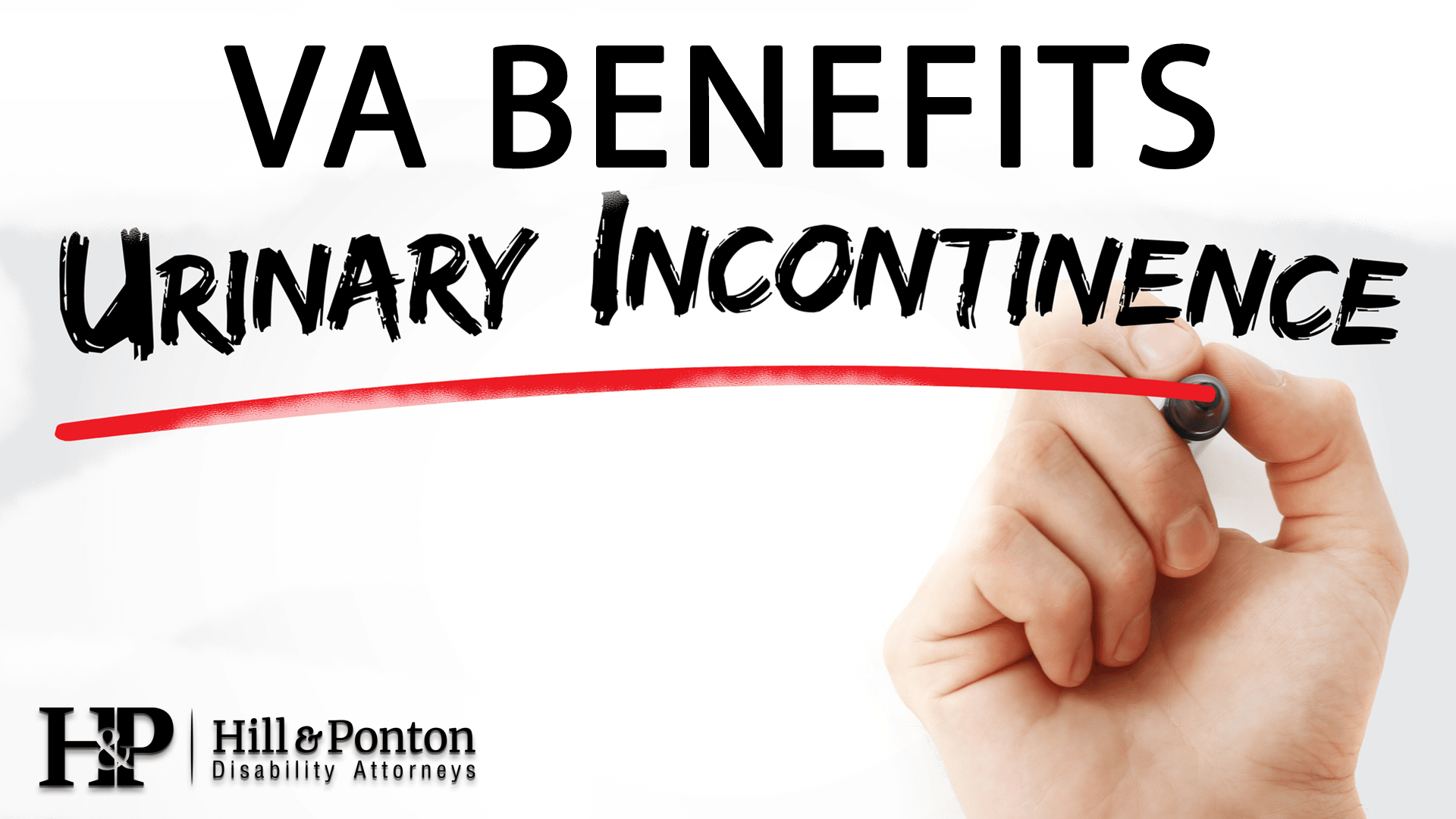Urinary incontinence is essentially a loss of bladder control. The severity can range from leaking urine when coughing or sneezing to a sudden urge to urinate that does not always allow you to make it to a bathroom in time. Common types of urinary incontinence include overflow incontinence, urge incontinence, stress incontinence and mixed incontinence.
Is Urinary Incontinence a VA disability?
Yes, it can be. Urinary incontinence is typically service-connected as a secondary issue. For example, you can develop incontinence due to a back condition or even a disease such as Parkinson’s or diabetes.
How Does the VA Evaluate Urinary Incontinence?
VA attorney Rachel Cheek explains how the VA rates urinary incontinence, what criteria are used and what rating you should be receiving.
If you suffer from urinary incontinence and were denied or underrated by the VA, our legal team may be able to help. Get a free evaluation of your case today.
Free case evaluationWhat Is the VA Rating for Urinary Incontinence?
VA assigns ratings for urinary frequency (from 10% to 20% and 40%), voiding dysfunction and obstructed dysfunction, based on the severity of symptoms. A veteran who requires the use of absorbent pads and changes those pads once per day is going to receive a rating of 20%. If the pads are changed two to four times daily, the veteran will be given a 40% VA disability rating. If the absorbent material needs to be changed more than four times per day, the veteran is rated at 60%.
VA Ratings for Urinary Frequency
- 10% rating – Daytime voiding interval between two and three hours, or; awakening to void two times per night
- 20% rating – Daytime voiding interval between one and two hours, or; awakening to void three to four times per night
- 40% rating – Daytime voiding interval less than one hour, or; awakening to void five or more times per night
VA Ratings for Voiding Dysfunction
Continual Urine Leakage, Post Surgical Urinary Diversion, Urinary Incontinence, or Stress Incontinence:
- Requiring the wearing of absorbent materials which must be changed less than 2 times per day – 20% rating
- Requiring the wearing of absorbent materials which must be changed 2 to 4 times per day – 40% rating
- Requiring the use of an appliance or the wearing of absorbent materials which must be changed more than 4 times per day – 60% rating
VA Ratings for Obstructed Voiding
0% – Obstructive symptomatology with or without stricture disease requiring dilatation 1 to 2 times per year
10% – Marked obstructive symptomatology (hesitancy, slow or weak stream, decreased force of stream) with any one or combination of the following:
- Post void residuals greater than 150 cc.
- Uroflowmetry; markedly diminished peak flow rate (less than 10 cc/sec).
- Recurrent urinary tract infections secondary to obstruction.
- Stricture disease requiring periodic dilatation every 2 to 3 months
30% – Urinary retention requiring intermittent or continuous catheterization
These ratings add up considerably, especially when paired with their primary conditions. For example, if you claimed urinary incontinence due to your back condition and your back condition is service-connected at 20%, you can receive a much higher rating if you change your absorbent pads more than four times per day.
How to Get Your Urinary Incontinence Rating

First, you will need to file a claim for urinary incontinence secondary to your service-connected disability. Next, you will need to provide a link between your current disability and the development of your urinary incontinence.
Be sure to submit any medical records documenting that the incontinence was caused by your service-connected disability. If there isn’t anything specific in your medical records linking the two, see if your doctor would be willing to write a statement indicating that your disability led to the development of urinary incontinence.
Evidence for Urinary Incontinence VA Claims
Next is to document how often you need to change your absorbent pads. It would be beneficial to write a statement on a VA Form 21-4138 attesting to the number of times per day and per night you are required to change the absorbent material. Do you require a waterproof mattress cover? Have you ever had any accidents? How often?
Have a witness, such as a spouse or a roommate, do the same. If you can provide a buddy statement to back up your claim, that is a great way to substantiate your case.
Urinary incontinence can be an embarrassing topic to discuss with a friend or a doctor, nonetheless a VA examiner; be sure that you do not downplay your disability. There is nothing to be ashamed of. If you require absorbent pads, let them know. If you have had accidents due to urinary incontinence, make sure you tell them.
You deserve VA disability compensation and to receive VA disability benefits for all of your military-related disabilities, and urinary incontinence is very common in veterans, but not often claimed. We can point you in the right direction and help you appeal if VA denied or underrated you. Get a free evaluation of your case here.




